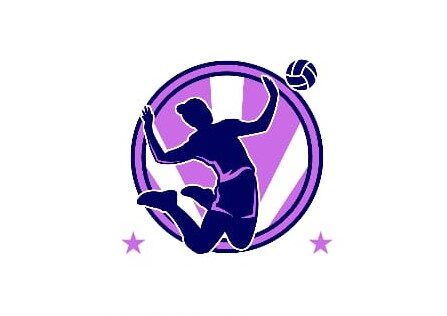The Sports and Recreation Commission is a vital body in promoting and facilitating sports and recreational activities within communities. Its main objective is to encourage physical activity, promote inclusivity, and create a vibrant sports culture that is accessible to everyone. Through various programs, facilities, and events, the Commission fosters a healthier, more active lifestyle for all.
Historical Background
Formation and Evolution
The Sports and Recreation Commission has evolved over decades to meet changing community needs. Initially founded to oversee sports grounds and community centers, its mission has expanded into areas like youth development, wellness initiatives, and accessibility.
Key Milestones and Achievements
Some of the key achievements include launching large-scale community fitness programs, hosting annual sports competitions, and fostering youth and disability-friendly sports.
Roles and Responsibilities
Managing Public Sports Facilities
One of the primary responsibilities of the Commission is managing public sports facilities, ensuring they are safe, accessible, and well-maintained for all community members.
Organizing Community Sports Programs
The Commission plays a central role in organizing programs that engage people of all ages in physical activities. These include weekend leagues, summer camps, and specialized programs for children, adults, and seniors.
Structure of the Sports and Recreation Commission
Departments and Divisions
The Commission is organized into several departments, each specializing in areas like youth development, facility management, event planning, and health promotion. This structure allows it to serve different community segments effectively.
Governance and Leadership
Overseeing the Commission is a leadership team that includes a board of directors, executive officers, and department heads, all working to ensure the organization’s goals align with community needs.
Funding Sources
Government Funding
Most of the Commission’s funding comes from government budgets allocated to promote community health, wellness, and sports.
Partnerships with Private Sectors
Private sector partnerships, including corporate sponsorships, play a significant role in financing sports events, upgrading facilities, and expanding program offerings.
Sports Programs and Events
Annual Sports Events Organized
The Commission organizes numerous annual events, like marathons, youth sports tournaments, and community fitness challenges. These events help bring communities together and promote a culture of sportsmanship and teamwork.
Recreational Programs for Youth
Youth programs include after-school sports, camps, and mentorship programs, aimed at fostering positive experiences with sports from a young age.
Community Engagement Initiatives
Volunteer Programs
The Commission runs various volunteer programs that encourage community members to get involved, either as coaches, event organizers, or support staff.
Inclusion of Diverse Groups
To make sports accessible to everyone, the Commission actively engages underrepresented groups, ensuring that all feel welcomed in community sports.
Health and Wellness Programs
Promoting Physical Fitness
The Commission promotes physical fitness by organizing regular exercise sessions, wellness seminars, and community-wide health screenings, encouraging people to stay active and fit.
Mental Health Benefits
Programs also target mental health, using sports and recreational activities to relieve stress and build supportive social networks.
Youth Development Programs
Training for Young Athletes
Training programs are offered to young, aspiring athletes, providing them with skilled coaching, resources, and the opportunity to hone their talents.
Academic and Sports Balance
The Commission emphasizes balancing academics with sports, ensuring young athletes get the support they need to excel both on the field and in the classroom.
Women in Sports Initiatives
Programs Encouraging Female Participation
Several programs actively promote female participation in sports by creating a supportive environment for girls and women to explore various sports.
Achievements by Women in Commission Programs
Over the years, numerous women have excelled in various sports through these programs, proving that gender is no barrier to athletic success.
Inclusivity and Accessibility
Adaptive Sports Programs
The Commission provides adaptive sports programs tailored for individuals with disabilities, ensuring everyone can participate in sports activities.
Ensuring Facilities for All Abilities
Facilities are designed to be accessible, with accommodations such as ramps, specialized equipment, and trained staff to assist individuals with varying abilities.
Environmental Sustainability Efforts
Eco-Friendly Facilities
The Commission prioritizes sustainability by incorporating eco-friendly materials and practices into facility design and operations, minimizing their environmental impact.
Awareness Campaigns for Green Practices
It also organizes awareness campaigns to educate communities on reducing waste, recycling, and conserving resources at sports events.
Challenges Faced by the Commission
Budgetary Constraints
Budget limitations can hinder the Commission’s ability to expand programs, improve facilities, and employ additional staff, impacting its reach and effectiveness.
Limited Resources for Expanding Programs
Limited resources often make it challenging to meet the growing demand for sports and recreational programs, especially in underserved areas.
The Future of Sports and Recreation Commissions
Plans for Expansion
Future plans include expanding facilities, introducing new sports programs, and increasing engagement through digital channels.
Focus on Digital Transformation
Digital platforms are becoming increasingly important, with the Commission looking to launch apps and online resources that provide real-time access to schedules, facilities, and program information.
Conclusion
In conclusion, the Sports and Recreation Commission plays an indispensable role in building healthy, active communities by promoting sports and recreational activities for people of all ages and abilities. Its programs foster inclusivity, support youth development, and contribute to overall well-being. Community support is essential to help the Commission continue making a positive impact—whether through volunteering, participating, or advocating for more resources.
Frequently Asked Questions (FAQs)
- What is the main role of the Sports and Recreation Commission?
- The main role is to manage sports facilities, organize community sports events, and promote physical activity across all age groups.
- How does the Commission support youth sports?
- The Commission supports youth sports through specialized training programs, youth leagues, camps, and mentorship opportunities.
- Are there programs for people with disabilities?
- Yes, the Commission provides adaptive sports programs and accessible facilities for individuals with disabilities.
- How can I volunteer with the Commission?
- You can volunteer by contacting the Commission directly or checking their website for open volunteer roles, especially in community events or youth programs.
- How is the Commission funded?
- The Commission is primarily funded by government grants, with additional support from private sector partnerships and community sponsors.

With your 6 years of experience as an article writer and shoes review expert, you’re well-positioned to provide insightful and detailed reviews.


